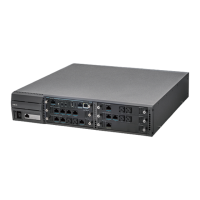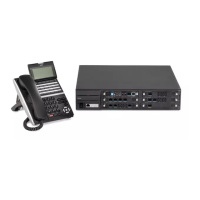SV9100 Networking Manual 5-1
Chapter 5
UNIVERGE
®
SV9100
Network Design Considerations
SECTION 1 INTRODUCTION
This chapter explains some issues that should be considered when planning a
UNIVERGE SV9100 VoIP installation. This is a generalized explanation and
therefore does not discuss vendor-specific issues and solutions. Typically, different
solutions are implemented by different manufacturers.
SECTION 2 QOS
Quality of Service (QoS) is one of the most important factors for VoIP. This refers to
the perceived quality of speech and the methods used to provide good quality
speech transmission. Several factors that affect speech quality and several
mechanisms can be used to ensure QoS.
This chapter also describes the problems that can occur and some possible
solutions. Each network equipment manufacturer (NEC, 3Com, Cisco, etc.) has
slightly different methods of implementing QoS and these are not discussed in this
document. This chapter provides an overview to classify voice traffic on the
UNIVERGE SV9100 so that the network equipment can impose QoS.
2.1 QoS Definitions
This section lists common definitions used with QoS for VoIP.
Latency (Delay):
If at any point the usage on the network exceeds the available bandwidth, the
user experiences delay, also called latency. In more traditional uses of an IP data
network, the applications can deal with this latency. If a person is waiting for a
web page to download, they can accept a certain amount of wait time. This is not
so for voice traffic. Voice is a real time application, which is sensitive to latency. If
the end-to-end voice latency becomes too long (250ms, for example), the call
quality is usually considered poor. It is also important to remember that packets
can get lost. IP is a best effort networking protocol. This means the network tries
to get the information there, but there is no guarantee.
Delay is the time required for a signal to traverse the network. In a telephony
context, end-to-end delay is the time required for a signal generated at the
talker's mouth to reach the listener's ear. Therefore, end-to-end delay is the sum

